Click on images to enlarge
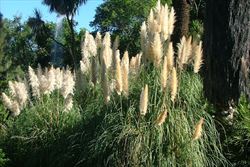
habit (Photo: Sheldon Navie)

habit (Photo: Sheldon Navie)
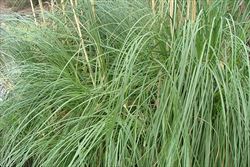
leaves (Photo: Sheldon Navie)
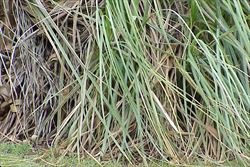
older leaves (Photo: Sheldon Navie)
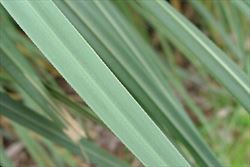
close-up of upper leaf surface (Photo: Sheldon Navie)
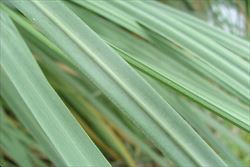
close-up of leaf undersides (Photo: Sheldon Navie)
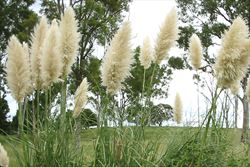
seed-heads (Photo: Sheldon Navie)
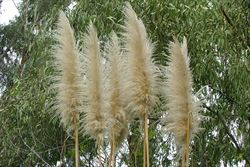
mature seed-heads (Photo: Sheldon Navie)
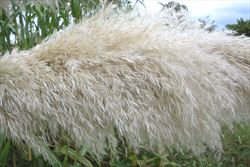
seed-head in flower (Photo: Sheldon Navie)
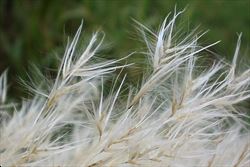
close-up of hairy flower spikelets (Photo: Sheldon Navie)
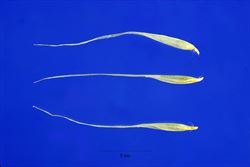
close-up of seeds (Photo: Steve Hurst at USDA PLANTS Database)
Scientific Name
Cortaderia selloana (Schult. & J.H. Schult.) Asch. & Graebner
Synonyms
Arundo dioeca Spreng.Arundo selloana Schult. & J.H. Schult.Cortaderia argentea (Nees) StapfCortaderia dioeca (Spreng.) Speg.Gynerium argenteum NeesMoorea argentea (Nees) Lem.
Family
Gramineae (South Australia)Poaceae (Queensland, New South Wales, the ACT, Victoria, Tasmania, Western Australia and the Northern Territory)
Common Names
common pampas, common pampas grass, cut throat grass, pampas grass, silver pampas grass, silvergrass, Uruguayan pampas grass, white pampas grass
Origin
Native to South America (i.e. Brazil, Argentina, Uruguay and Chile).
Cultivation
Pampas grass (Cortaderia selloana) is still cultivated as a garden ornamental in southern and eastern Australia, though legislation has reduced its popularity in some regions.
Naturalised Distribution
A widely distributed species that is naturalised mainly in the southern parts of Australia. It is most commonly found throughout Tasmania, in southern and central Victoria, in the ACT, in south-western Western Australia, and in the coastal and sub-coastal regions regions of central New South Wales. Also present in south-eastern South Australia and south-eastern Queensland and possibly naturalised on Norfolk Island. Infestations are common near the capital cities in most states (i.e. near Perth in Western Australia, Brisbane in Queensland, Sydney in New South Wales, Melbourne in Victoria and Adelaide in South Australia).
Habitat
A weed of temperate, sub-tropical and occasionally semi-arid regions that prefers damp places, such as wetlands, swamps and stream banks. It also grows in disturbed sites, waste areas, bushland, open woodlands, grasslands, coastal environs, forestry plantations and along roadsides.
Habit
A large, long-lived (i.e. perennial), tussock-forming grass with very large drooping leaves and flowering stems usually 2-4 m tall, but sometimes reaching up to 6 m in height.
Distinguishing Features
- a very large, long-lived, tussock-forming grass with thick flowering stems growing 2-6 m tall.
- its long and narrow leaves are very large (60-200 cm long and 3-20 mm across) and have very sharp, finely toothed margins.
- their bases are pale yellow or whitish and as the leaves mature they droop down towards the ground.
- its whitish seed-heads are large (25-100 cm long), plume-like and feathery in appearance (fading to light brown as they mature).
- separate male and female florets are usually produced on separate plants.
- female florets have silky hairs (4-8 mm long) while male florets are hairless.
Stems and Leaves
The relatively thick flowering stems (up to 3 cm across) are upright (i.e. erect) and grow 2-6 m tall. They are hollow and greyish-green to yellowish-green in colour.
The large leaves consist of a short leaf sheath, that clasps the stem at the base, and a spreading leaf blade. Leaf sheaths may be smooth and hairless (i.e. glabrous) or somewhat hairy (i.e. pubescent) and their bases are a distinctive pale yellowish or whitish colour. The long and narrow (i.e. linear) leaf blades are very large (60-200 cm long and 3-20 mm wide), with pointed tips (i.e. acute apices) and very sharp, finely toothed (i.e. serrated) margins. They are slightly bluish-green (i.e. glaucous) above and generally dark green below, with a distinct midvein running lengthwise. A fringe of hairs (i.e. a ciliated ligule) 3-5 mm long is present where the leaf sheath meets the leaf blade. As the leaves mature they droop downwards, and they reach towards the ground in spirals once they are dead and dry.
Flowers and Fruit
The seed-head (25-100 cm long) is large, plume-like (i.e. an open panicle), feathery in appearance and initially white, cream or silvery (rarely pale pink or purple) in colour. These seed-heads are borne at the tips of the thick flowering stems (i.e. culms) and consist of large numbers of flower spikelets. Plants may have only female or male and female flowers (i.e. they are gynodioecious). Each of the flower spikelets (10-18 mm long) is narrow (i.e. lanceolate) and consists of a pair of bracts (i.e. glumes) and 2-7 florets (4-8 mm long). Female florets have silky hairs (4-8 mm long) while the male florets are hairless (i.e. glabrous). Flowering occurs mostly during late summer and autumn.
The seed-heads fade to light brown or straw-coloured as they mature. Seeds (i.e. grains or caryopses) are narrowly oval (i.e. elliptic) in shape (2-3 mm long and about 0.6 mm wide), straw-coloured and enclosed within two 'bracts' (i.e. a palea and lemma).
Reproduction and Dispersal
This species reproduces mainly by seed, which can be produced in the normal way (i.e. by fertilisation) or vegetatively (i.e. by apomixis).
Seeds are normally wind-dispersed, but may also be spread by water, machinery and in dumped garden waste.
Environmental Impact
This species is regarded as an environmental weed in Victoria, New South Wales, ACT, Tasmania, Western Australia, South Australia and Queensland. It is actively managed by community groups in Tasmania, Western Australia, New South Wales and the ACT and is among the 200 most invasive plants in south-eastern Queensland.
Pampas grass (Cortaderia selloana) prefers open sunny places that receive added moisture, and often invades damp places such as freshwater wetlands, stream banks and the margins of mangrove swamps. It has also spread into several drier plant communities including dry coastal forests, heathlands, open woodlands and grasslands. Infestations can become very dense, excluding most of the native ground flora and seriously impeding the recruitment of overstorey species. This species is also invasive in other parts of the world, and is listed in the Global Invasive Species Database.
Other Impacts
Pampas grass (Cortaderia selloana) produces large amounts of flammable material, and the dense tufts of dead leaves can be a fire hazard. It also reduces the aesthetic values of conservation areas, limits recreational access along tracks, produces large amounts of wind-blown pollen that may exacerbate allergic conditions such asthma and hay fever, and is a potentially serious weed of forestry plantations. The edges of its leaves are sharply toothed and can easily cut human skin, leaving irritating welts.
Legislation
This species is declared under legislation in the following states and territories:
- ACT: C4 - prohibited pest plant (a pest plant whose propagation and supply is prohibited).
- New South Wales: Class 4 - a locally controlled weed. The growth and spread of this species must be controlled according to the measures specified in a management plan published by the local control authority and the plant may not be sold, propagated or knowingly distributed (in a large number of local authority areas). See the New South Wales Department of Primary Industries Noxious Weeds List at http://www.dpi.nsw.gov.au for more detailed information on which local areas are covered in these declarations. This declaration also applies to all pampas grasses (i.e. Cortaderia spp.).
- Tasmania: D - the importation or sale of this species is prohibited and measures to reduce its population in an area, eradicate it from an area, or restrict it to a particular area may be required. This declaration also applies to all pampas grasses (i.e. Cortaderia spp.).
- Western Australia: Prohibited - on the prohibited species list and not permitted entry into the state.
Management
For information on the management of this species see the following resources:
- the New South Wales Department of Primary Industries Agfact on pampas grasses, which is available online at http://www.dpi.nsw.gov.au.
- the Tamar Valley Weed Strategy information page on pampas grasses, which is available online at http://www.weeds.asn.au.
- the Environmental Weeds Action Network information page on pampas grasses, which is available online at http://members.iinet.net.au/~ewan/index.html.
Similar Species
Pampas grass (Cortaderia selloana) is very similar to pink pampas grass (Cortaderia jubata) and New Zealand pampas grass (Cortaderia richardii). These species can be distinguished by the following differences:
- pampas grass (Cortaderia selloana ) has relatively dense and very large seed-heads (25-100 cm long) that are usually whitish or silvery in colour when young. Its leaves are usually somewhat bluish-green or greyish-green (i.e. glaucous) in colour and have a very prominent midvein.
- pink pampas grass (Cortaderia jubata ) has relatively dense and very large seed-heads (30-90 cm long) that are usually pinkish or purplish in colour when young. Its leaves are usually bright green or dark green in colour and have a very prominent midvein.
- New Zealand pampas grass (Cortaderia richardii ) has relatively sparse seed-heads (30-60 cm long) that are usually whitish or pale brown in colour when young. Its leaves are usually somewhat bluish-green or greyish-green (i.e. glaucous) in colour, have a prominent midvein and also have distinct secondary veins.
Pampas grass (Cortaderia selloana) is also relatively similar to giant reed (Arundo donax) and common reed (Phragmites australis). However, both of these species produce seed-heads at the top of stems that have numerous joints (i.e nodes) with alternately arranged leaves.

